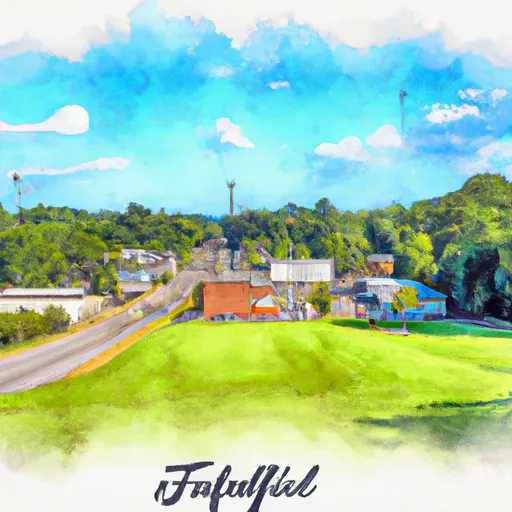-
 Snoflo Premium
Snoflo Premium
Get unlimited access to all our content
With no Ad interruptions! - Start Your Free Trial Login with existing account
Fairfield-Glade
Eden Index
Climate
7.6
•
Recreation
3.6
•
Community
1.7
•
Safeguard
4.7/10

Fairfield Glade, Tennessee is located in the Cumberland Plateau region and experiences a humid subtropical climate. The summers are hot and humid, while the winters are mild with occasional snowfall. The area is rich in hydrology constituents with numerous lakes, streams, and waterfalls, including Lake Dartmoor, Lake St. George, and the Cumberland Mountain State Park. These water bodies offer visitors swimming, boating, fishing, and other water-based activities. Outdoor recreation opportunities in Fairfield Glade are abundant, with over 100 miles of hiking and biking trails, golf courses, tennis courts, and parks. The area is also home to several nature reserves, including the Lost Creek State Natural Area and the Obed Wild and Scenic River.
What is the Eden Index?
The Snoflo Eden Index serves as a comprehensive rating system for regions, evaluating their desirability through a holistic assessment of climate health, outdoor recreation opportunities, and natural disaster risk, acknowledging the profound impact of these factors on livability and well-being.
Climate Health Indicator (CHI): 7.6
Fairfield-Glade receives approximately
1422mm of rain per year,
with humidity levels near 84%
and air temperatures averaging around
13°C.
Fairfield-Glade has a plant hardyness factor of
6, meaning
plants and agriculture in this region thrive during a short period during spring and early summer. Most
plants will die off during the colder winter months.
By considering the ideal temperature range, reliable water supplies, clean air, and stable seasonal rain or snowpacks, the Climate Health Indicator (CHI) underscores the significance of a healthy climate as the foundation for quality living.
A healthy climate is paramount for ensuring a high quality of life and livability in a region, fostering both physical well-being and environmental harmony. This can be characterized by ideal temperatures, reliable access to water supplies, clean air, and consistent seasonal rain or snowpacks.
Weather Forecast
Streamflow Conditions
Upper Tennessee
Area Rivers
Upper Tennessee
Snowpack Depths
Upper Tennessee
Reservoir Storage Capacity
Upper Tennessee
Groundwater Levels
Recreational Opportunity Index (ROI): 3.6
The Recreational Opportunity Index (ROI) recognizes the value of outdoor recreational options, such as parks, hiking trails, camping sites, and fishing spots, while acknowledging that climate plays a pivotal role in ensuring the comfort and consistency of these experiences.
Access to outdoor recreational opportunities, encompassing activities such as parks, hiking, camping, and fishing, is crucial for overall well-being, and the climate plays a pivotal role in enabling and enhancing these experiences, ensuring that individuals can engage in nature-based activities comfortably and consistently.
Camping Areas
| Campground | Campsites | Reservations | Toilets | Showers | Elevation |
|---|---|---|---|---|---|
| McIntosh Reserve Park | None | 715 ft | |||
| Tally Valley County Park | None | 1,117 ft | |||
| Chester Frost Park | None | 750 ft | |||
| John Tanner State Park | None | 1,094 ft | |||
| VFW County Park | None | 1,096 ft | |||
| Possum Creek RV - Chickamauga Lake | None | 774 ft | |||
| Chattahoochee Bend State Park | 50 | 928 ft | |||
| Coosa River County Park | None | 591 ft | |||
| 56 | 886 ft | ||||
| Harrison Bay State Park | 149 | 721 ft |
Nearby Fishing
Nearby Ski Areas
Catastrophe Safeguard Index (CSI):
The Catastrophe Safeguard Index (CSI) recognizes that natural disaster risk, encompassing floods, fires, hurricanes, and tornadoes, can drastically affect safety and the overall appeal of an area.
The level of natural disaster risk in a region significantly affects safety and the overall livability, with climate change amplifying these risks by potentially increasing the frequency and intensity of events like floods, fires, hurricanes, and tornadoes, thereby posing substantial challenges to community resilience and well-being.
Community Resilience Indicator (CRI): 1.7
The Community Resilience Indicator (CRI) recognizes that education, healthcare, and socioeconomics are crucial to the well-being of a region. The CRI acknowledges the profound impact of these elements on residents' overall quality of life. By evaluating educational resources, healthcare accessibility, and economic inclusivity, the index captures the essential aspects that contribute to a thriving community, fostering resident satisfaction, equity, and social cohesion.

